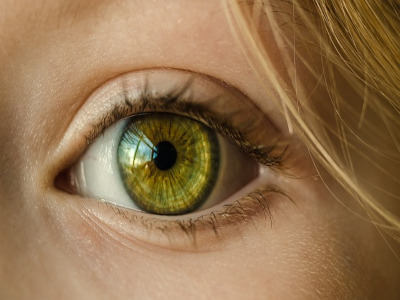Everyone has heard at some point in their lives about farsightedness (hyperopia) and shortsightedness (myopia). Unfortunately, a lot of people suffer from one of these two common vision conditions. But what does it mean to be farsighted or shortsighted? What are the causes, and how can it be treated?
Farsightedness
You are farsighted when you can see objects that are further away from you, but you get blurry vision when you look at objects at closer distances.
You can detect symptoms of farsightedness when you notice that the letters in books or the food on the plate in front of you are barely visible from a short distance, but you are able to see them clearly when you stand further away from them. This condition is not noticed immediately most of the time because the brain can correct the vision error up to a certain extent. It is often noticed through head aches, dizziness, or when your eyes get tired.
What is happening in the eye when you are farsighted? The eyeball is too short, and/or the refractive power of the eye is too small. This is why the light rays are not focused on the retina but behind it. Therefore, the focal point is too far in the back, and the image appears blurry.
Other than that, hyperopia is something that is inborn. For most people, it gets worse when they get older and can lead to presbyopia.
Nearsightedness
You are nearsighted when you can see objects that are closer to you, but you get blurry vision when you look at objects at further distances.
You can detect symptoms of nearsightedness when you notice that objects like road signs or shop names are hardly visible from a distance, and you are only able to read them when you stand directly in front of them. A typical reaction for many nearsighted people is to pinch their eyes together in order to see things from a greater distance.
What is happening in the eye when you are shortsighted? The eyeball is too long, and/or the refractive power of the eye is too high. This is why the light rays are not focused on the retina anymore, which should be focused in a healthy eye. Therefore, the focal point is too far forward, which results in a blurry image.
Furthermore, myopia can be caused by reading when you are too close to the book or by staring too close to the screen of your smartphone or laptop. Also, it develops most of the time between the ages of ten and twelve. After the age of 25, myopia normally does not get worse. If this is the case, though, the diopter values can get really high (up to ten diopters).

olho-verde-1132531/
When you notice any of the symptoms of either farsightedness or nearsightedness, then the way to the optician would be worthwhile. If the eye examination brings a result of more than +2,00 diopters, then you are farsighted, and if it brings a result of less than -2,00 diopters, you are nearsighted.
Luckily, there are ways to correct hyperobia and yopia by wearing reading glasses, single-vision glasses, or contact lenses. You should get advice from your optometrist because he or she can best determine what support your eyes need based on your vision test results.
Sources:
https://www.apollo.de/ratgeber/augen-und-sehen/kurzsichtig-weitsichtig
